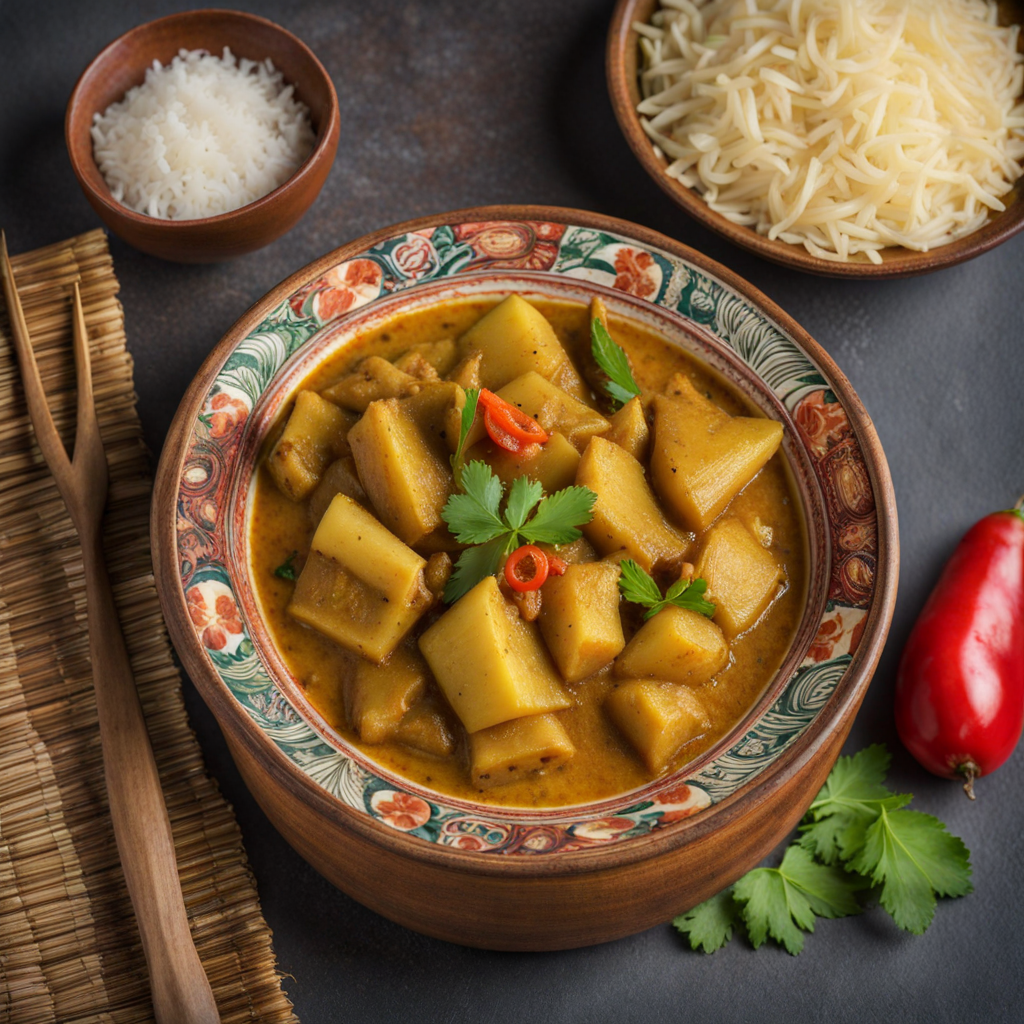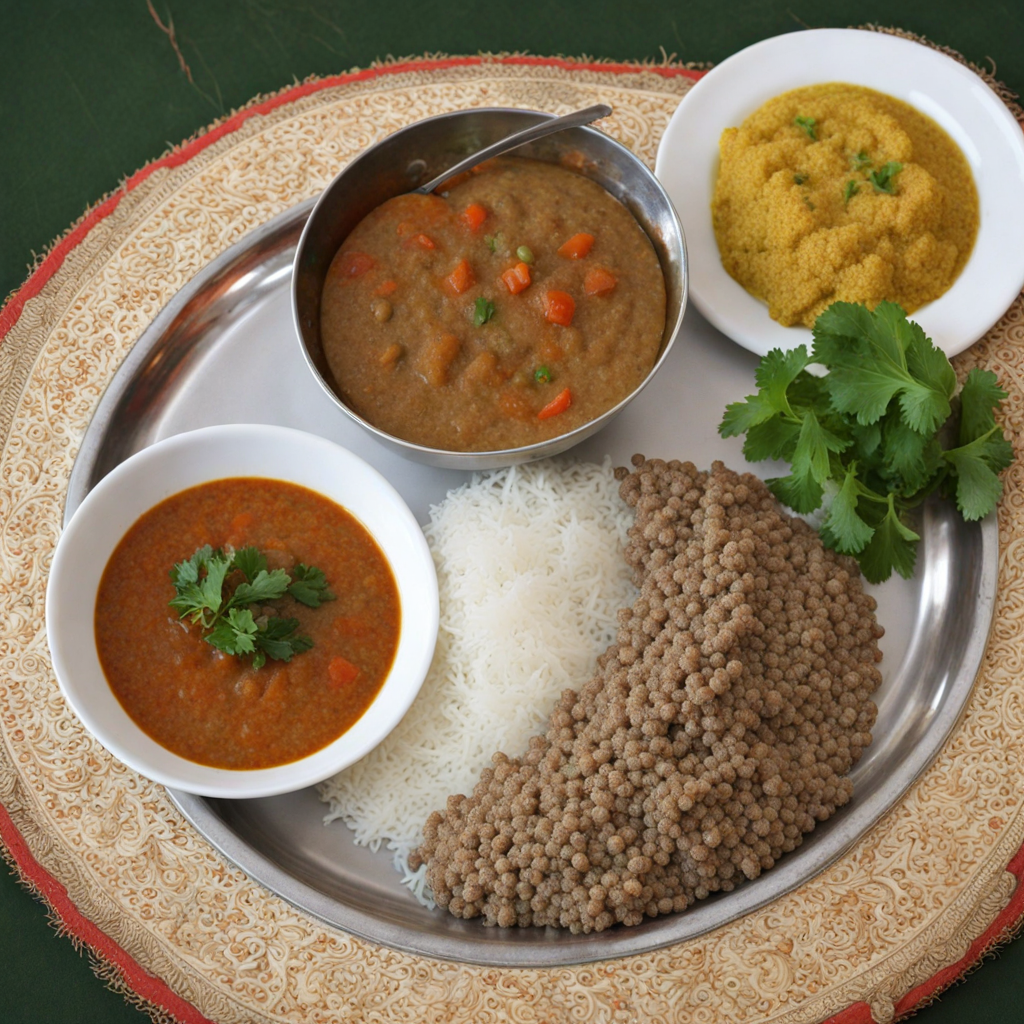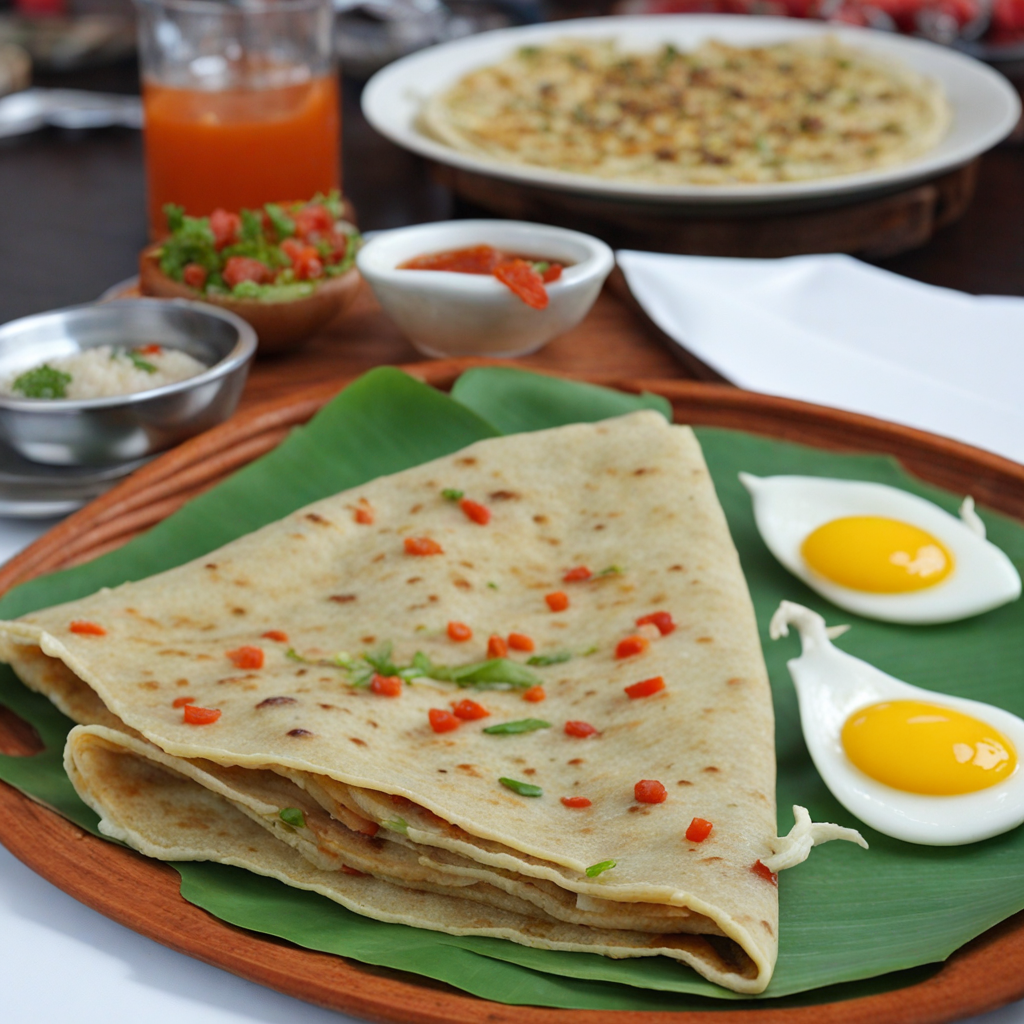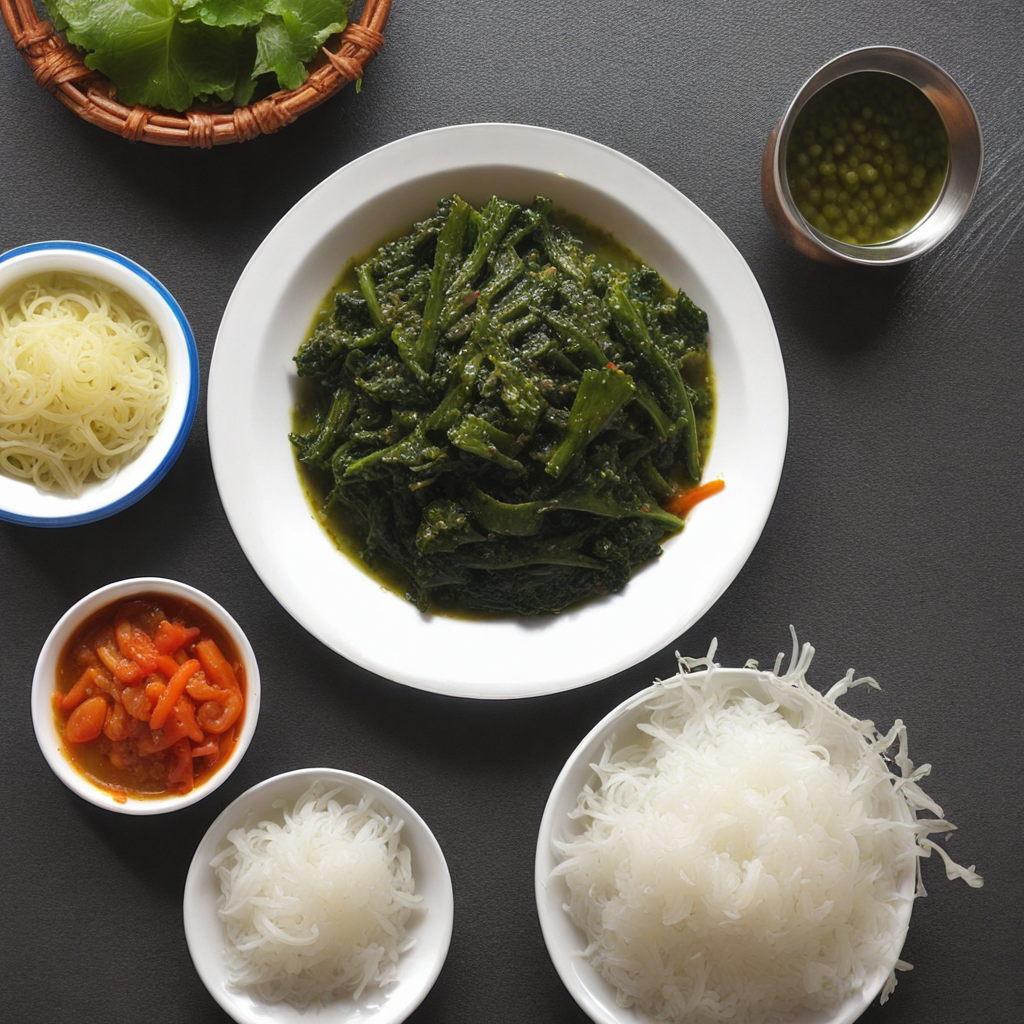Aloo Tama
Aloo Tama is a unique and flavorful dish from Nepal that showcases the incredible diversity of Nepali cuisine. The name itself translates to 'potato and bamboo shoots,' which are the main ingredients that come together to create a delightful medley of textures and tastes. The potatoes, typically diced into bite-sized pieces, are soft and creamy when cooked, while the bamboo shoots bring a pleasant crunch and a slightly earthy flavor, enhancing the dish's overall profile. This combination is often enriched with an array of spices, such as turmeric, cumin, and coriander, which infuse the dish with warmth and aromatic depth. One of the standout aspects of Aloo Tama is its distinctive use of fermented bamboo shoots, known as 'tama,' which adds a tangy and slightly sour note to the dish. This fermentation process not only preserves the bamboo shoots but also elevates the dish by introducing a complex flavor that is both refreshing and invigorating. The dish is often enriched with black-eyed peas or lentils, adding protein and further enhancing the heartiness of the meal. Served alongside steamed rice or roti, Aloo Tama is both satisfying and nutritious, making it a beloved staple in many Nepali households. Aloo Tama is a testament to the rich culinary traditions of Nepal, where the balance of flavors is carefully curated to create a harmonious dish. It is commonly enjoyed during family gatherings and festive occasions, often accompanied by other traditional dishes, which highlight the communal aspect of Nepalese dining. With its vibrant colors and inviting aroma, Aloo Tama not only pleases the palate but also offers a glimpse into the cultural heritage of Nepal, making it a must-try for anyone looking to explore new and exciting flavors.
How It Became This Dish
The Culinary Journey of आलु तामा: A Taste of Nepal #### Origin and Historical Context आलु तामा, a traditional dish from Nepal, marries the humble potato (आलु) with fermented bamboo shoots (तामा), creating a unique culinary experience that reflects the country’s rich cultural tapestry. The origins of आलु तामा can be traced back to the diverse ethnic communities residing in the hilly and mountainous regions of Nepal, particularly the Newars, who are known for their vibrant food culture. The Newars, an indigenous group of the Kathmandu Valley, have long celebrated their culinary heritage, and आलु तामा is a testament to their innovative use of local ingredients. The dish likely emerged from the need to preserve food in a landlocked country with limited access to trade routes. Bamboo shoots, which are abundant in the wild, can be fermented to enhance their shelf life, while potatoes became a staple after their introduction from South America via the Columbian Exchange in the late 16th century. As these two ingredients were combined, आलु तामा evolved into a nourishing dish that provided sustenance during harsh winters, embodying the ingenuity of Nepalese cuisine. #### Cultural Significance आलु तामा is more than just a meal; it is a cultural symbol, embodying the communal spirit and traditions of the Nepalese people. The dish is often prepared during festivals and family gatherings, reflecting its role in fostering connections among people. In Newar culture, food is a means of celebration, and आलु तामा often finds its place among other traditional dishes served during special occasions like weddings, Dashain, and Indra Jatra. The preparation of आलु तामा is often a social affair, where family members come together to cook and share stories, reinforcing familial bonds and cultural ties. This communal aspect of food preparation highlights the importance of community in Nepalese society. Moreover, आलु तामा is often served alongside other dishes, creating a harmonious balance of flavors that represents the diversity of Nepalese cuisine. #### Ingredients and Preparation The primary ingredients in आलु तामा are potatoes, fermented bamboo shoots, and various spices. The bamboo shoots, known for their tangy flavor, are harvested from the forests and undergo a fermentation process that can last several days. This process not only preserves the bamboo shoots but also enhances their flavor, making them a perfect complement to the starchy potatoes. To prepare आलु तामा, the potatoes are typically peeled and cut into chunks, while the fermented bamboo shoots are rinsed to remove excess salt and sourness. The two are then cooked together with spices such as turmeric, cumin, and sometimes even chili, depending on the regional variations and personal preferences. The dish is often finished with a sprinkle of fresh cilantro, adding a vibrant touch and a burst of freshness. Regional variations exist, with some versions incorporating meat, particularly in the hilly regions where livestock farming is prevalent. In these cases, the dish is enriched with the addition of chicken or goat meat, making it a hearty meal. The adaptability of आलु तामा to include various ingredients speaks to the broader culinary practices in Nepal, where local resources dictate the composition of traditional dishes. #### Development Over Time As Nepal has modernized and opened its doors to global influences, the preparation and presentation of आलु तामा have also evolved. While traditional methods of cooking remain popular, contemporary chefs and home cooks alike have begun to experiment with the dish, introducing new flavors and techniques while maintaining its essence. In urban areas, where access to diverse ingredients has increased, variations of आलु तामा have emerged. Some chefs have adopted innovative approaches by integrating international culinary techniques, leading to fusion dishes that blend traditional Nepali flavors with global influences. Additionally, with the rise of health-conscious eating, there is a growing trend towards using organic and locally sourced ingredients, which has further revitalized interest in traditional dishes like आलु तामा. Furthermore, the dish has gained attention beyond Nepal's borders, particularly among the Nepalese diaspora. As Nepali communities have settled in various parts of the world, they have brought their culinary traditions with them, including आलु तामा. This migration has led to a renewed appreciation for the dish, as it serves as a connection to their heritage and a way to share their culture with new communities. In restaurants catering to Nepalese cuisine abroad, आलु तामा is often featured on the menu, allowing a broader audience to discover and enjoy its unique flavors. #### Conclusion: A Dish of Resilience and Adaptation आलु तामा stands as a testament to the resilience and adaptability of Nepalese cuisine. Rooted in the rich cultural heritage of the Newar people, this dish encapsulates the spirit of community and the significance of food in social bonding. Its evolution over time reflects the dynamic nature of culinary traditions, adapting to changing lifestyles, and embracing new influences while retaining its core identity. In a world that is increasingly interconnected, आलु तामा serves as a reminder of the importance of preserving cultural heritage through food. It connects generations, fosters community, and celebrates the flavors of Nepal. As more people discover and appreciate this dish, it continues to thrive, ensuring that the legacy of आलु तामा endures for future generations to savor and cherish.
You may like
Discover local flavors from Nepal







